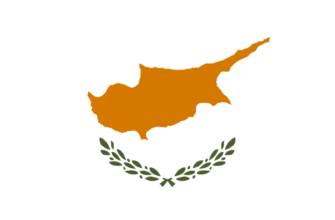The Republic of Singapore is a city-state in Southeast Asia. It has an area of 726 square kilometers and a population of 5.8 million people.
This is what the modern flag of Singapore looks like:

History of the flag
Very little information has survived about Singapore, and the first of them date back to the early 19th century, when the island attracted the attention of the British, who saw in it the prospect of creating and developing a new port. From 1819, the British ruled the island under their own flag.

The emergence of modern Singapore proceeded apace and by the 20th century it was already a major industrial center for rubber and tin production. As a British colony, Singapore also acquired its own symbolism.

During World War II, Japan occupied Singapore and considered it its territory until its defeat. The symbol of that period was the flag of Japan.

From 1946 to 1952, the British Union Jack was again used on the symbol of the colonial territory, which in 1952 was slightly modified in the style of the image of the crown.

The current national flag was first adopted in 1959, after Singapore became self-governing as part of Britain.
In 1963 the inhabitants of the country voted to join the federation of Malaysia, but Singapore withdrew from it two years later. The Malayan was used as the official symbol during this period.

In August 1965, the 1959 version of the flag was once again approved as the symbol of an independent state.
Description
The flag of Singapore is a rectangular cloth, the sides of which relate to each other in the proportion of 2:3. It consists of two horizontal equal parts. The upper stripe is bright red and the lower one is white. The upper half has a crescent moon, the convexity of which is turned toward the staff, and within it are five five-pointed stars. Their arrangement resembles the figure of a pentagon. The crescent and the stars are in white.
The position of the stars have similarities with the position of the stars in the constellation Southern Cross.
 Flag colors
Flag colorsFlag colors
Only two colors are used on the flag of the Republic: red and white.
Meaning of colors and flag symbol
The colors of the national symbol have a special meaning for Singaporeans.
- White — symbolizes the spiritual purity of the inhabitants of the country and their virtuous thoughts.
- Red — the desire for equality of people on the planet and universal brotherhood.
The new moon, represented on Singapore’s flag, signifies the beginning of the young nation’s emergence, its rise, and its yearning for progress. The five-pointed white stars recall the peaceful existence of various religious and secular ideas, as well as the ideals of Singapore:
- Democracy;
- the world;
- progress;
- justice;
- equality.
Other Flags
The Republic has approved and operates versions of symbols for government agencies and institutions. These include:
- The standard of the President of the country;

- A civilian symbol used for registered civilian vessels;

- Warrant Officer in the Navy, for military vessels, and State Naval Warrant Officer, for all non-military vessels;


- Armed Forces of the RS;

- RS Army;

- RS Air Force.

Interesting facts about the flag
During the discussion of the version of the flag, it was originally presented as a full red flag, but the Cabinet rejected it, finding similarities with Communist and the symbol was divided into two colors.
The final version also took into account the opinion of the country’s population. For the Chinese, the five stars were modeled on the PRC symbol, and for Muslims, the crescent was depicted.
General information about Singapore
| Official language | English, Chinese (Putonghua), Malay and Tamil |
| Capital | Singapore |
| Territory | 725.7 km² |
| Population | 5,781,110 people |
| Currency | Singapore dollar (SGD) |
| Phone Code | +65 |










Как Троицкий Александр, хотел бы отметить, что флаг Сингапура — это яркий символ национальной идентичности и гордости. Красный цвет олицетворяет мужество и силу, а белый — мир и чистоту. Звезда на флаге символизирует пят принципов, важные для национального единства. Этот флаг не только представляет страну, но и напоминает о ее стремлении к процветанию и гармонии. Интересно, как через такие символы можно передать ценности и историческую значимость нации.
I visited Singapore last year and was fascinated by its flag. The red symbolizes brotherhood and equality, while the white stands for purity and peace. I even learned that the crescent represents a young nation on the rise. Such a neat story behind a simple flag!
I had the chance to visit Singapore last year, and seeing the flag flying everywhere filled me with pride. It reminded me of the country’s rich culture and unity. I’m grateful for that experience and how it opened my eyes to the beauty of different nations.
I remember visiting Singapore and seeing the flag everywhere! It felt so proud and vibrant. Learning about its history really connected me to the culture. Plus, the food was amazing! I can’t wait to go back and explore more of this beautiful city!
Hey! I totally get that vibe—visited Singapore last year and felt the same pride. The flag’s everywhere, symbolizing unity and progress. Trying chili crab was a game-changer for me! It’s cool how symbols and food make culture come alive, right? Can’t wait for your next trip!
As a guy who loves traveling, I remember spotting the Singapore flag flying high during a night market visit. The crescent and stars stood out, making me curious about its meaning. It’s cool how a flag can tell a country’s story without saying a word!